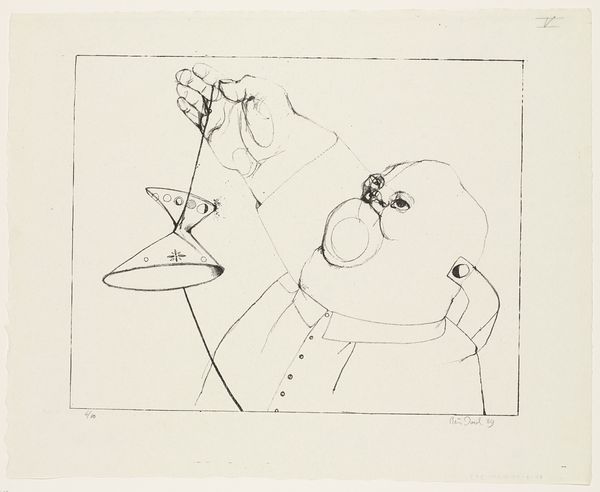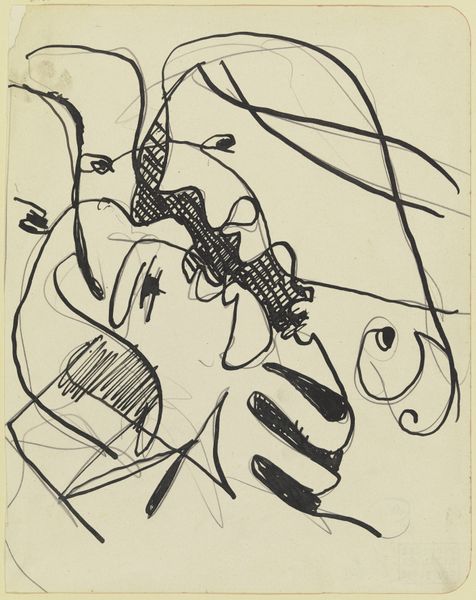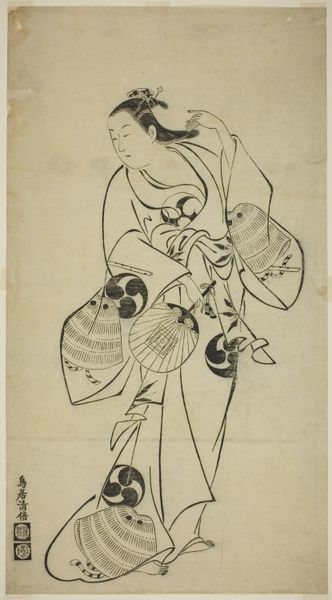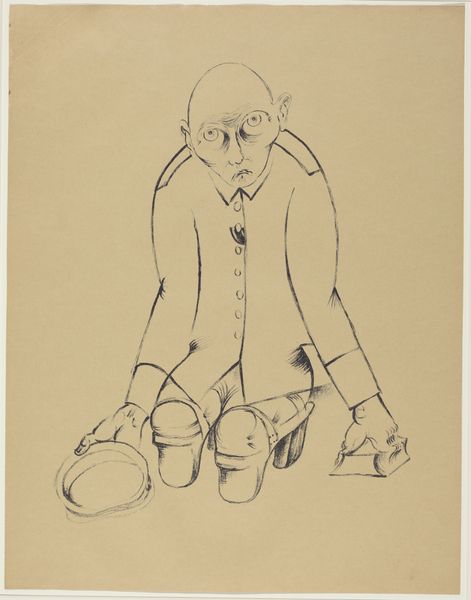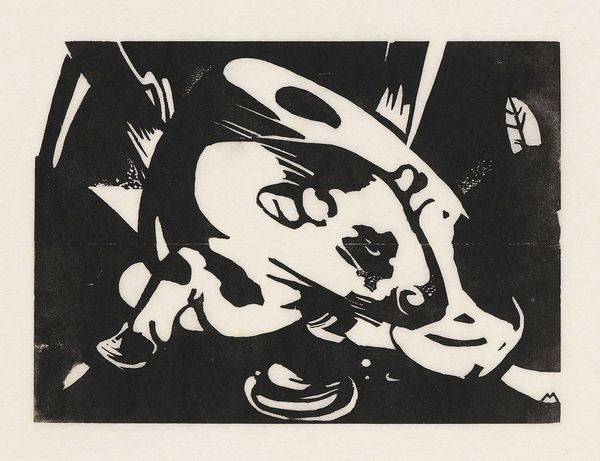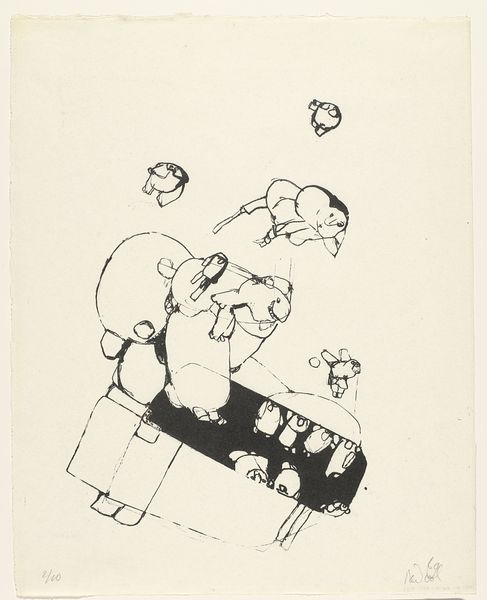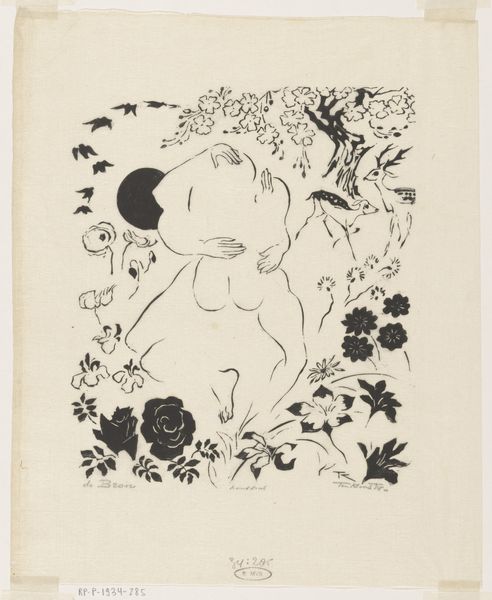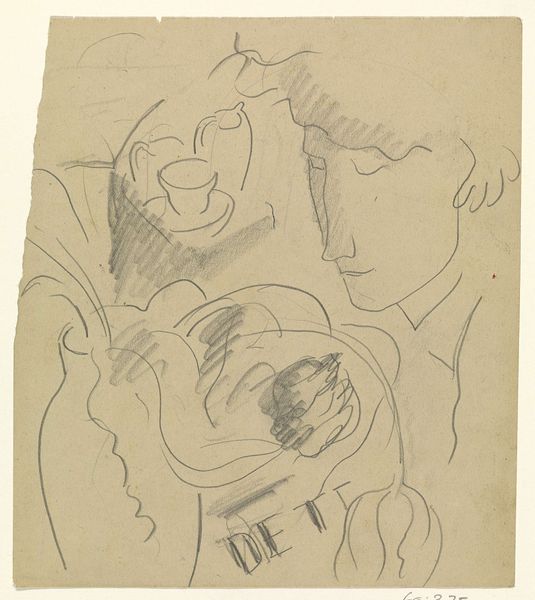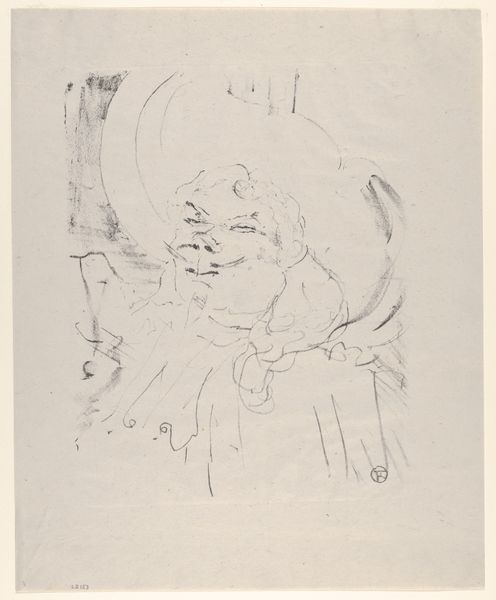
drawing, ink
#
abstract-expressionism
#
drawing
#
quirky illustration
#
childish illustration
#
cartoon like
#
cartoon based
#
caricature
#
caricature
#
cartoon sketch
#
figuration
#
ink
#
ink drawing experimentation
#
sketchbook drawing
#
cartoon style
#
cartoon carciture
Dimensions: height 478 mm, width 388 mm, height 390 mm, width 310 mm
Copyright: Rijks Museum: Open Domain
Editor: Here we have Rein Dool’s "Menselijke figuren" from 1969, currently at the Rijksmuseum. It’s an ink drawing and at first glance, it reminds me of a cartoon, albeit a rather peculiar one. What are your thoughts when you look at this work? Curator: Well, let’s start with the medium itself, ink. Why ink? During the mid-20th century, artists were pushing back against traditional modes of artmaking. A simple medium like ink, readily available and inexpensive, becomes a conscious choice. It democratizes the artistic process. It rejects the elitism associated with oil painting, for example. Does that suggest anything to you about the message Dool might be trying to convey? Editor: Maybe a rejection of high art? The choice of ink definitely strips away some of the…grandeur, I guess you could say? The caricatured figures seem to point to a critique, too. Curator: Exactly. Look at the date – 1969. What else was happening? Social upheaval, questioning of authority… and Dool gives us these almost childish, repetitive figures. Are they individuals, or a commentary on mass identity, mass production even? The act of repetitive drawing, line after line, becomes almost like factory work itself. How does that lens change your view? Editor: It makes the ‘cartoonish’ quality more unsettling. At first, it seemed whimsical, but if you consider the labour… then it’s quite bleak, a commentary on being just another cog in the machine, maybe? Curator: Precisely. And the “skill” involved isn't particularly valued or virtuosic, further muddying any distinction between skilled labour and something any person can do. The meaning is found less in *what* is represented, but more in *how* and *why*. Editor: So, by focusing on the materials and the act of creation itself, we can see how Dool is engaging with those larger social issues. I initially overlooked that entirely, getting caught up in the image alone. Curator: Material considerations pull aside the curtain on labour conditions of the time. Remember: art does not only express culture, art *is* a form of cultural labor.
Comments
No comments
Be the first to comment and join the conversation on the ultimate creative platform.
